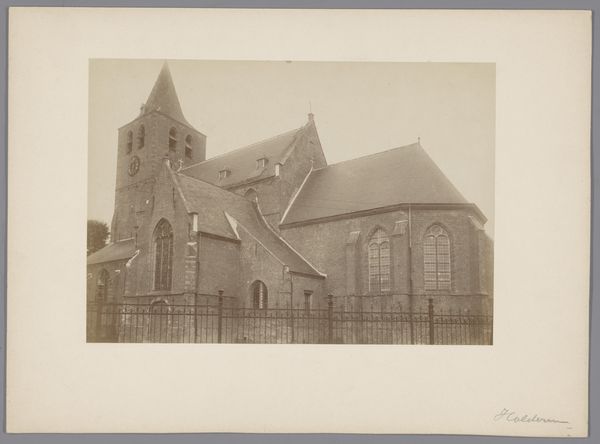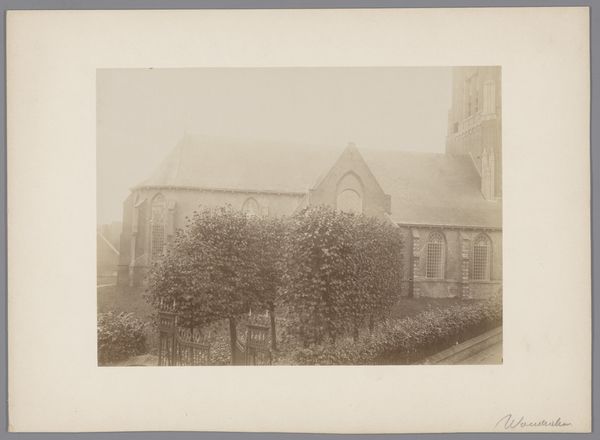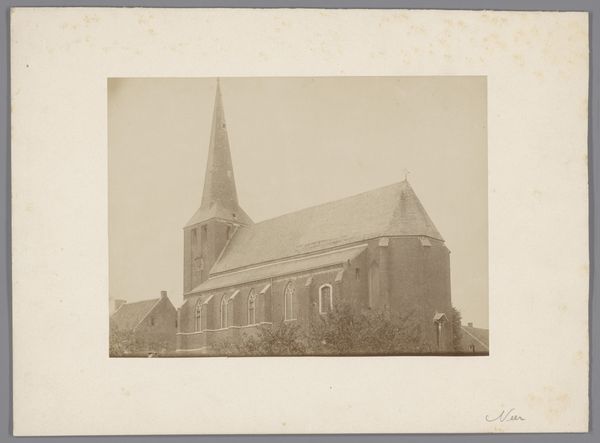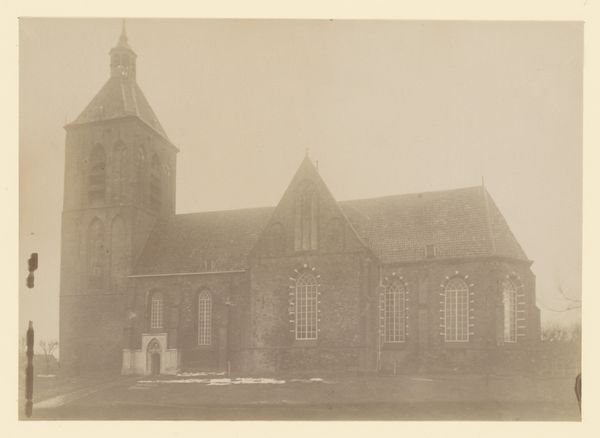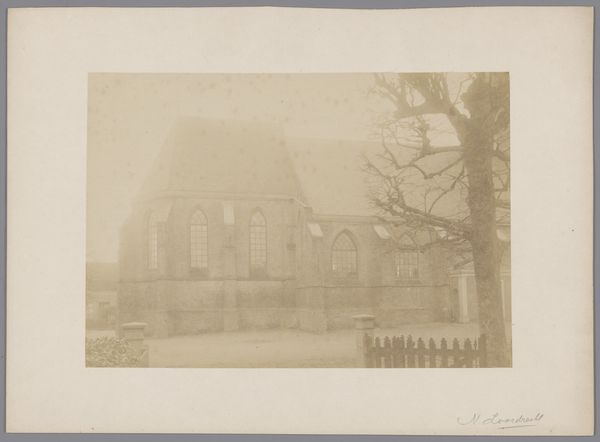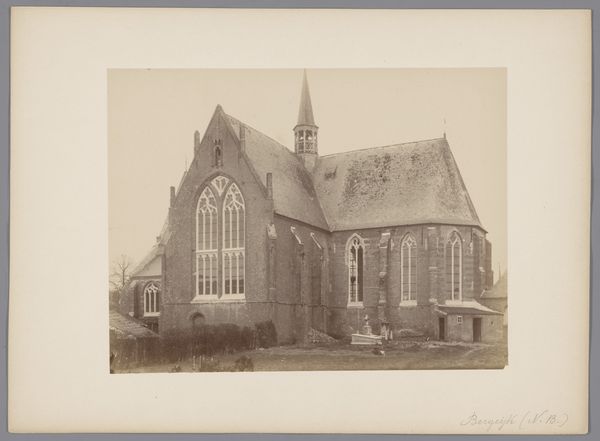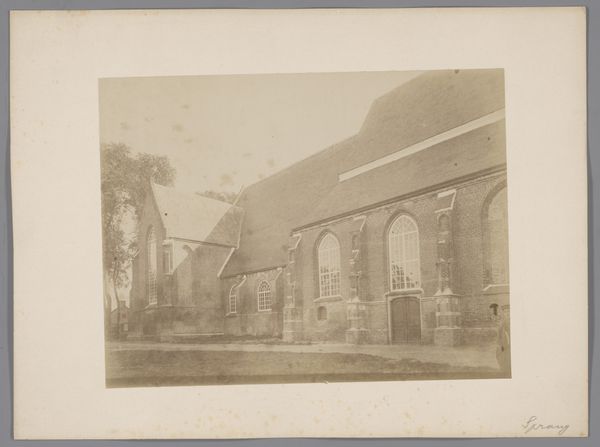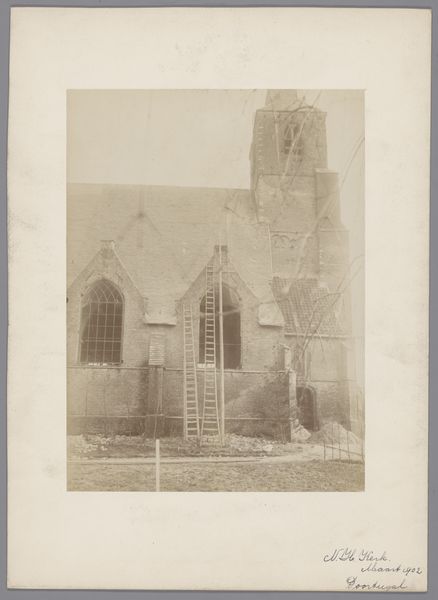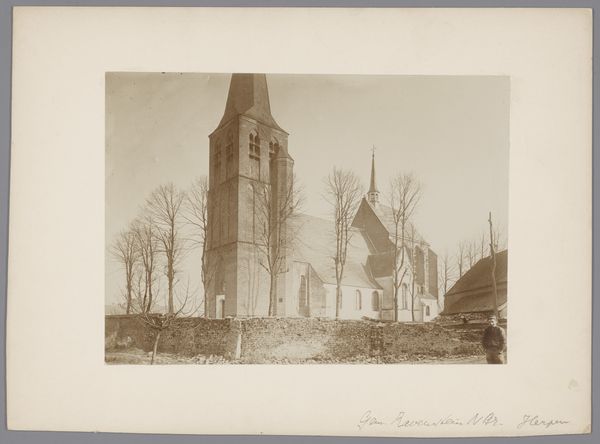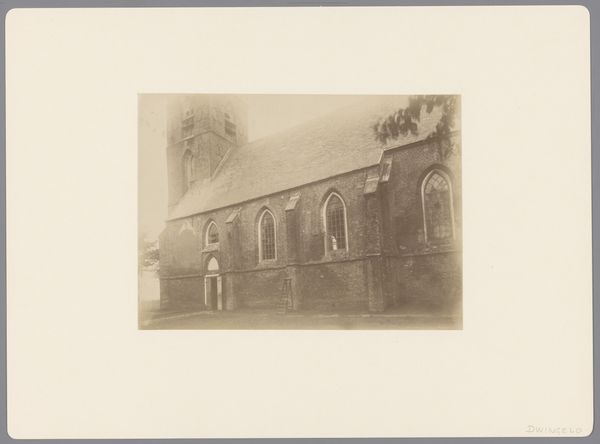
Dimensions: height 158 mm, width 230 mm
Copyright: Rijks Museum: Open Domain
Editor: Here we have an image from 1902, titled 'Noordzijde van de Dorpskerk te Poortugaal', showing the north side of a village church in Poortugaal. It's a monochromatic photograph. I'm struck by how much the photograph itself communicates a sense of age, and of a solemn past. What historical context might be relevant to understanding this image? Curator: That's a perceptive observation. Consider that images of religious buildings, even relatively straightforward ones like this, serve as affirmations of community identity and continuity. A photograph taken in 1902 captures the building at a time of shifting social structures and anxieties. Photography at this time became an important tool for historical documentation and national self-representation. Who was the image intended for, and how would they use it? These are essential questions. Editor: So, you are suggesting that in addition to its artistic qualities, we should see it as a deliberate form of record-keeping or perhaps even propaganda? Curator: Precisely. The image could function as a form of cultural preservation, emphasizing a particular idealized vision of rural Dutch life, reinforcing religious or local traditions, at a time of rapid urbanization and secularization. I'm also wondering if the photograph was taken for the Dutch national agency for the care of monuments that started taking photographs to document national heritage. Think of how these images circulate, and who has access to them. Editor: It is fascinating how this relatively simple photograph opens up so many questions about society at the time! Now I'm wondering about the power dynamics at play in defining what gets preserved and how. Curator: Indeed! It invites us to reflect on who shapes the narrative of cultural heritage. Editor: Thank you. Thinking about who controls the image, and for what purpose, gives me so much to consider! Curator: My pleasure. Remember, art always exists within, and reflects, broader social forces.
Comments
No comments
Be the first to comment and join the conversation on the ultimate creative platform.

